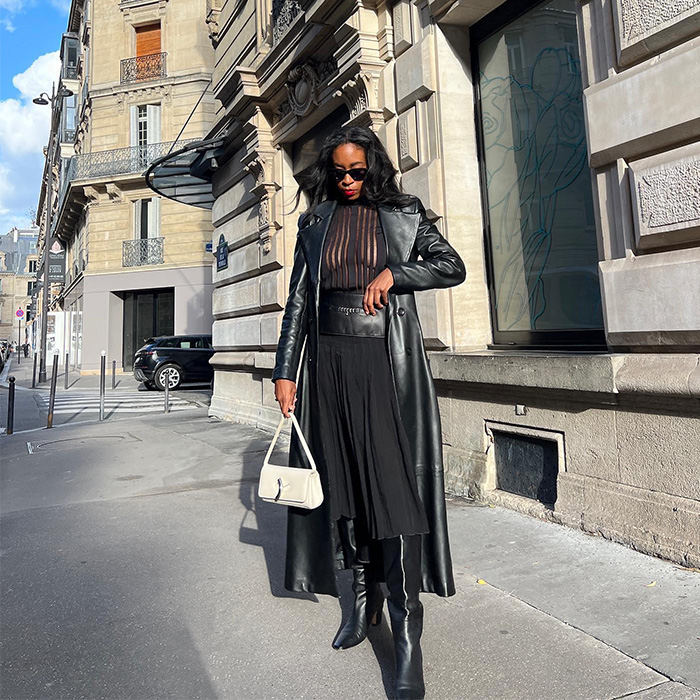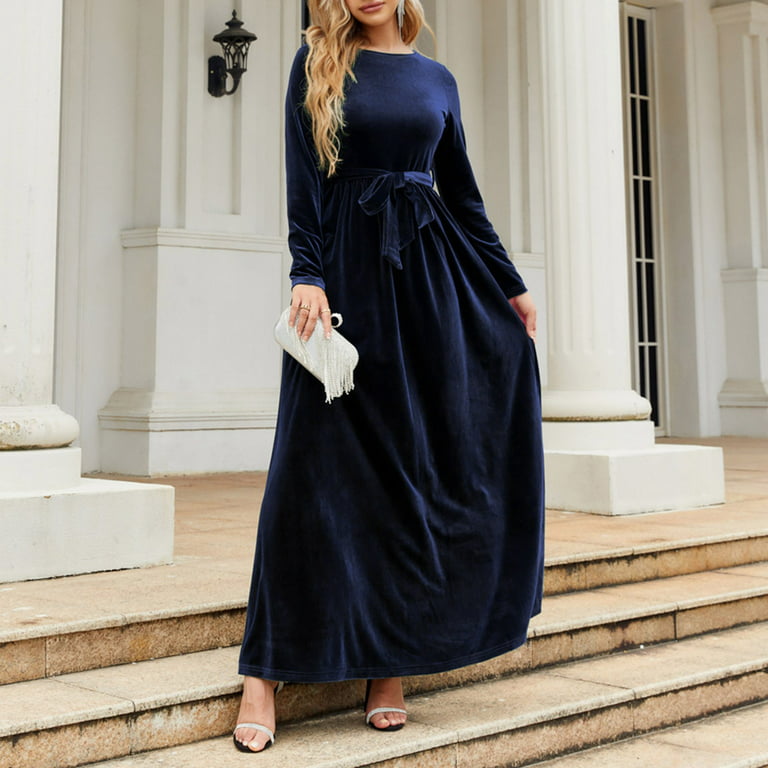Dress Fabrics Suitable for Winter
When you’re planning on wearing dresses in winter, choosing the right fabric is key. Here’s what to look for:

- Wool: A classic choice, wool provides excellent warmth and breathability. It’s ideal for chilly days.
- Velvet: This luxurious fabric isn’t just elegant, it’s also quite warm, making it perfect for winter events.
- Corduroy: With its ribbed texture, corduroy traps air and insulates effectively, keeping you cozy.
- Knit Fabrics: Thick knits like sweater dresses are both comfortable and warm. They’re great for casual wear.
- Cashmere: Though on the pricier side, cashmere is both warm and lightweight—ideal for layering.
These fabrics not only help retain heat but also add texture and depth to your outfit. By selecting dresses made from these materials, you’ll be well on your way to looking stylish and staying warm throughout the winter months.
Layering Techniques for Extra Warmth
When wearing dresses in winter, layering is your ally. Here’s how to layer effectively for added warmth:
- Start with a Thermal Base Layer: Choose a snug, thermal undergarment to preserve body heat. Think long-sleeve tops and leggings.
- Add a Lightweight Dress: Over your base, wear a dress made from one of the winter-appropriate fabrics mentioned earlier.
- Incorporate a Sweater or Cardigan: Select a chunky knit or wool sweater to go over your dress. This provides additional insulation.
- Use Tights or Leggings: Add thick tights or leggings under your dress for extra warmth on your legs.
- Top with a Cozy Outer Layer: Finish with a heavy coat or a stylish jacket that complements your dress.
- Remember Scarves and Gloves: Don’t forget to wrap up in a scarf and slip on some gloves to keep extremities warm.
With these layering techniques, you’ll create a barrier against the cold while wearing dresses in winter. You’ll enjoy both fashion and function even on the coldest days.

Accessorizing Your Winter Dress Outfits
Accessorizing isn’t just about adding style—it’s also about boosting warmth when wearing dresses in winter. Here’s how to make a statement with your accessories while keeping the chill at bay:
- Scarves: A must-have for winter, scarves provide warmth around your neck and can add a pop of color.
- Hats: From chic berets to warm beanies, hats retain heat that escapes from your head.
- Gloves: Leather or knit gloves keep your fingers toasty without sacrificing elegance.
- Belts: Use a stylish belt to cinch in your layers at the waist for a put-together look.
- Jewelry: Choose bold pieces like brooches or earrings to draw attention upwards.
- Bags: Opt for larger bags that can easily store your winter essentials, like gloves and a beanie.
When you select accessories, consider the functionality as much as the fashion. Properly chosen accessories won’t just complete your outfit; they’ll elevate your comfort as you boldly fashion your winter dress ensembles.

Selecting the Right Footwear for Winter Dresses
When sporting dresses during the frosty season, footwear choice is crucial not just for style, but for maintaining warmth and preventing slips on icy surfaces. Here’s a quick guide to selecting the right footwear for your winter dresses:
- Boots: Undoubtedly the go-to winter footwear, sturdy boots with a good tread offer warmth and stability. Opt for knee-high or over-the-knee styles to keep your legs warm.
- Ankle Booties: If knee-high boots aren’t your preference, ankle booties are a fashionable and practical alternative. Choose those with insulation or a lined interior for extra heat retention.
- Weather-Resistant Materials: Look for footwear made from waterproof or water-resistant materials to keep your feet dry in snow or rain.
- Thermal Insoles: Adding thermal insoles to your shoes can provide an extra layer of warmth.
- Non-Slip Soles: For added safety, ensure your footwear has non-slip soles to navigate winter’s slippery conditions with ease.
- Heeled Options: If you prefer heels, wedge or block heels offer more stability than stilettos on uncertain terrain.
By picking the right shoes to wear with your winter dress, you’ll step out confidently and comfortably, even when the temperature drops. Keep these tips in mind, and your feet will thank you throughout the wintry season.
Tips for Maintaining Style and Comfort
When sporting dresses in the colder months, you want to be both stylish and cozy. Here are tips to master this balance:
- Choose Comfortable Shapes: Opt for loose-fitting or A-line dresses that allow easy movement and layering.
- Select Appropriate Lengths: Go for midi or maxi dresses that offer more coverage to keep you warm.
- Invest in Quality Fabrics: Pick dresses in wool, cashmere, or layered knits for warmth without bulk.
- Opt for Darker Colors: Dark hues absorb more heat, making them a wise choice for winter wear.
- Go for Versatile Pieces: Items that can transition from casual to formal with the right accessories are key.
- Maintain Your Dresses: Care for your winter dresses properly to ensure they last and look new.
By keeping these tips in mind when you dress up during winter, you can enjoy both fashion and function.
How to Wear Dresses in Snowy Conditions
When the snow starts to fall, wearing dresses can seem challenging. But with the right techniques, you can stay warm and look great. Here are practical tips for wearing dresses in snowy conditions:
- Choose Heavier Fabrics: Opt for dresses made of heavier, insulating materials like wool or velvet.
- Waterproof Your Legs: Wear water-resistant leggings or thick, waterproof tights with your dresses.
- Layer Wisely: Under your dress, layer with thermals. A cardigan or sweater can add warmth up top.
- Opt for Long Sleeves and High Necklines: Dresses with long sleeves and higher necklines provide more coverage against the cold.
- Longer Dress Lengths: Consider midi or maxi dresses to keep your lower body shielded.
- Wear Sturdy Boots: Pair your dress with boots that have a non-slip sole and water-resistant upper.
- Protect Your Dress: If it’s actively snowing, wear a waterproof outer layer to keep your dress dry.
By following these suggestions, you can confidently wear dresses, even in snowy winter weather. Keep movement and warmth in mind, and don’t forget to prioritize safety on slippery surfaces.
The Best Dress Styles for Cold Weather
Choosing dress styles for cold weather can be tricky. You want to stay warm while looking chic. To help you out, here are the top styles that provide both comfort and elegance:
- Long Sleeve Dresses: These provide extra coverage for your arms and can be a stylish option.
- Sweater Dresses: Their thick knit material is perfect for keeping warm and can look very fashionable.
- Shirt Dresses with Belts: Add a belt to define your waist and pair with warm leggings.
- Maxi Dresses: The long length keeps your legs protected from the cold breeze.
- Wrap Dresses: These can be easily layered over thermal wear and are versatile for any occasion.
- Turtleneck Dresses: A high-neck dress keeps the chill off your neck and looks timeless.
- Tailored Wool Dresses: A well-fitted wool dress can be both warm and professional.
Remember that the key to wearing dresses in winter is to choose those made from warmer fabrics. Also, consider the dress cut and style—those that offer more coverage tend to be better for cold weather. By selecting the best dress styles for cold weather, you’ll nail the balance between staying warm and looking poised.
Transitioning Your Dresses from Fall to Winter
As the seasons shift from the cool breezes of fall to the icy touch of winter, transitioning your wardrobe, especially your dresses, becomes essential. Here’s a straightforward way to adapt your favorite fall dresses for the colder months, ensuring warmth without compromising on style.
- Layer Up: Begin by layering. A long-sleeve tee under a fall dress can add warmth. For extra coziness, wear a cardigan or a sweater over the dress.
- Warm Tights: Swap sheer fall tights for thicker, insulated ones. These help retain body warmth and are key for wearing dresses in winter.
- Heavier Outerwear: Ditch the light fall jackets for heavy coats. Look for ones that end below the dress hem for maximum protection and style.
- Thermal Accessories: Introduce thermal scarves, hats, and gloves. These maintain body heat and easily transition dress looks for winter.
- Smart Footwear: Replace open-toe shoes with closed, insulated boots. They keep your feet warm and prevent slipping on ice or snow.
- Material Swap: If your fall dresses are light, consider winter fabrics. Materials like wool or velvet provide more warmth and work well for the winter season.
By doing so, you can smoothly navigate the seasonal change without losing the charm and versatility of dresses. Remember, the goal is to keep the cold out while still enjoying the elegance of wearing dresses in winter.
